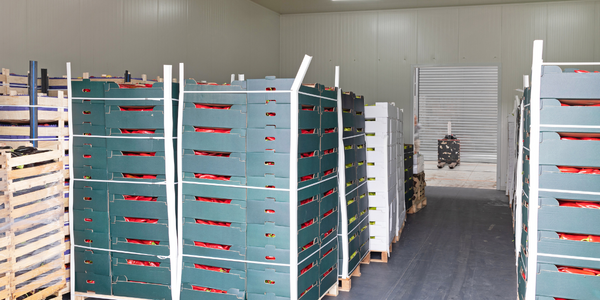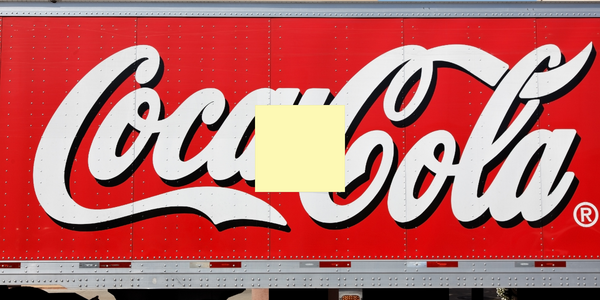Customer Company Size
Large Corporate
Region
- Europe
Country
- Serbia
Product
- DocuWare DMS
Tech Stack
- Document Management System
Implementation Scale
- Enterprise-wide Deployment
Impact Metrics
- Productivity Improvements
- Digital Expertise
Technology Category
- Application Infrastructure & Middleware - Data Exchange & Integration
Applicable Industries
- Food & Beverage
Applicable Functions
- Business Operation
Use Cases
- Regulatory Compliance Monitoring
- Remote Collaboration
Services
- System Integration
About The Customer
Imlek is the largest dairy producer in the Balkan region with over 80 different dairy products on the market. The company, based in Serbia, has been in operation for over 50 years and has always focused on expert personnel and continuous improvement of production processes. Imlek is an innovative company that relies on modern technology to streamline its operations. The company has multiple production sites and a headquarters in Belgrade. The company's administrative processes were primarily paper-based, leading to inefficiencies and delays in approvals and payments.
The Challenge
Imlek, the largest dairy producer in the Balkan region, was facing challenges with its paper-based business processes. Documents such as supplier invoices, contracts, and other receipts were physically transported between individual production sites and their headquarters in Belgrade on a weekly basis. This resulted in numerous inconsistencies and delays in approval and payment, especially when processing incoming A/P invoices. Employees at both the head office and at the individual branches found it extremely difficult to trace the documents. Once the documents were sent out, there was no way for colleagues on site to search for individual receipts or information.
The Solution
Imlek implemented the DocuWare Document Management System (DMS) to digitize all their administration processes. The solution was implemented by an authorized DocuWare partner who set up about 130 digital workflows. The system automatically recognizes the type of document being stored and whether further processing steps are required. In the case of incoming invoices or contracts, the system defines the individual sign-off stages up to final processing, significantly increasing the transparency of internal process flows. The system also ensures that only authorized users can access confidential documents. Contracts and invoices approved or rejected with the help of digital stamps appear in the final step in the administration task lists, where final processing takes place.
Operational Impact
Quantitative Benefit

Case Study missing?
Start adding your own!
Register with your work email and create a new case study profile for your business.
Related Case Studies.

Case Study
The Kellogg Company
Kellogg keeps a close eye on its trade spend, analyzing large volumes of data and running complex simulations to predict which promotional activities will be the most effective. Kellogg needed to decrease the trade spend but its traditional relational database on premises could not keep up with the pace of demand.

Case Study
HEINEKEN Uses the Cloud to Reach 10.5 Million Consumers
For 2012 campaign, the Bond promotion, it planned to launch the campaign at the same time everywhere on the planet. That created unprecedented challenges for HEINEKEN—nowhere more so than in its technology operation. The primary digital content for the campaign was a 100-megabyte movie that had to play flawlessly for millions of viewers worldwide. After all, Bond never fails. No one was going to tolerate a technology failure that might bruise his brand.Previously, HEINEKEN had supported digital media at its outsourced datacenter. But that datacenter lacked the computing resources HEINEKEN needed, and building them—especially to support peak traffic that would total millions of simultaneous hits—would have been both time-consuming and expensive. Nor would it have provided the geographic reach that HEINEKEN needed to minimize latency worldwide.

Case Study
Energy Management System at Sugar Industry
The company wanted to use the information from the system to claim under the renewable energy certificate scheme. The benefit to the company under the renewable energy certificates is Rs 75 million a year. To enable the above, an end-to-end solution for load monitoring, consumption monitoring, online data monitoring, automatic meter data acquisition which can be exported to SAP and other applications is required.

Case Study
Coca Cola Swaziland Conco Case Study
Coco Cola Swaziland, South Africa would like to find a solution that would enable the following results: - Reduce energy consumption by 20% in one year. - Formulate a series of strategic initiatives that would enlist the commitment of corporate management and create employee awareness while helping meet departmental targets and investing in tools that assist with energy management. - Formulate a series of tactical initiatives that would optimize energy usage on the shop floor. These would include charging forklifts and running cold rooms only during off-peak periods, running the dust extractors only during working hours and basing lights and air-conditioning on someone’s presence. - Increase visibility into the factory and other processes. - Enable limited, non-intrusive control functions for certain processes.

Case Study
Temperature Monitoring for Restaurant Food Storage
When it came to implementing a solution, Mr. Nesbitt had an idea of what functionality that he wanted. Although not mandated by Health Canada, Mr. Nesbitt wanted to ensure quality control issues met the highest possible standards as part of his commitment to top-of-class food services. This wish list included an easy-to use temperature-monitoring system that could provide a visible display of the temperatures of all of his refrigerators and freezers, including historical information so that he could review the performance of his equipment. It also had to provide alert notification (but email alerts and SMS text message alerts) to alert key staff in the event that a cooling system was exceeding pre-set warning limits.

Case Study
Coca-Cola Refreshments, U.S.
Coca-Cola Refreshments owns and manages Coca-Cola branded refrigerators in retail establishments. Legacy systems were used to locate equipment information by logging onto multiple servers which took up to 8 hours to update information on 30-40 units. The company had no overall visibility into equipment status or maintenance history.







